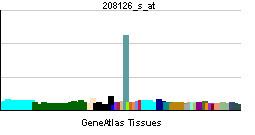Entrez 1562 | Ensembl ENSG00000108242 | |
 | ||
Aliases CYP2C18, CPCI, CYP2C, CYP2C17, P450-6B/29C, P450IIC17, cytochrome P450 family 2 subfamily C member 18 External IDs MGI: 1919332 HomoloGene: 133567 GeneCards: CYP2C18 | ||
Function
This gene encodes a member of the cytochrome P450 superfamily of enzymes. The cytochrome P450 proteins are monooxygenases which catalyze many reactions involved in drug metabolism and synthesis of cholesterol, steroids and other lipids. This protein localizes to the endoplasmic reticulum but its specific substrate has not yet been determined. The gene is located within a cluster of cytochrome P450 genes on chromosome 10q24. An additional gene, CYP2C17, was once thought to exist; however, CYP4217 is now considered an artefact based on a chimera of CYP2C18 and CYP2C19.
CYP2C18 also possesses epoxygenase activitiy: it can attack various long-chain polyunsaturated fatty acids at their double (i.e. alkene) bonds to form epoxide products that act as signaling agents. It metabolizes: 1) arachidonic acid to various epoxyeicosatrienoic acids (also termed EETs); 2) linoleic acid to 9,10-epoxy octadecaenoic acids (also termed vernolic acid, linoleic acid 9:10-oxide, or leukotoxin) and 12,13-epoxy-octadecaenoic (also termed coronaric acid, linoleic acid 12,13-oxide, or isoleukotoxin); 3) docosohexaenoic acid to various epoxydocosapentaenoic acids (also termed EDPs); and 4) eicosapentaenoic acid to various epoxyeicosatetraenoic acids (also termed EEQs).
While CYP2C19, CYP2C8, CYP2C9, CYP2J2, and possibly CYP2S1 are the main producers of EETs and, very likely EEQs, EDPs, and the epoxides of linoleic acid, CYP2C18 may contribute to the production of these metabolites in certain tissues.
